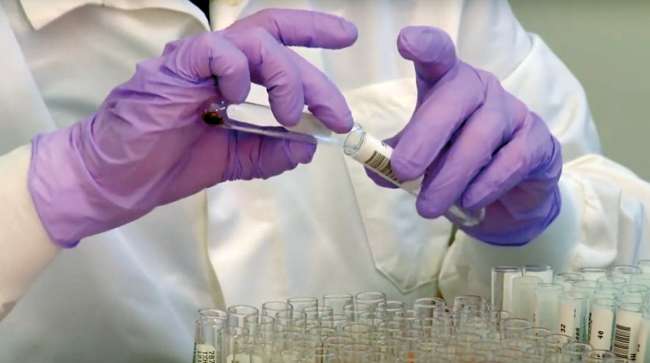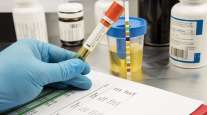Senior Reporter
Drug Positivity Rate in US General Workforce Hit 14-Year High in 2018

The rate of U.S. general workforce drug positivity hit a 14-year high in 2018, according to a new drug testing analysis released April 11 by Quest Diagnostics.
Positivity rates in the combined U.S. workforce increased nearly 5% in urine drug tests, from 4.2% in 2017 to 4.4% in 2018, climbing to the highest level since 2004 (4.5%). They now are more than 25% higher than the 30-year low of 3.5% recorded each year from 2010-12.
The Quest analysis of workforce drug positivity is based on more than 10 million U.S. drug tests in 2018. The data does not specifically break down drug testing for truck drivers.
The Quest data also show:
- Increases in marijuana positivity across nearly all employee testing categories, including the federally mandated security-sensitive workforce. That consists of not only Department of Transportation commercial vehicle drivers but also certain employees at the Department of Defense and Nuclear Regulatory Commission.
- Increases in post-accident test positivity for on-duty incidents in the general U.S. workforce, outpacing those for all other testing reasons, including pre-employment screening.
- The rise in urine specimens reported as invalid suggests more efforts to “cheat the test.”
Increases in post-accident workplace drug positivity in federally mandated, safety-sensitive and, general U.S. workforce, according to new Quest Diagnostics analysis. Read more: https://t.co/P48GBq8N2C pic.twitter.com/aeETS7fhNZ — Quest Diagnostics (@QuestDX) April 11, 2019
The positivity rates for drug testing done with hair samples was significantly higher for the general U.S. workforce than for urine tests, according to Quest. For 160,000 drug tests using hair samples, the positivity rate was 10.9% in 2018, up from 10.3% in 2017.
“Our in-depth analysis shows that marijuana is not only present in our workforce, but use continues to increase,” Barry Sample, PhD, senior director of science and technology for Quest, said in a statement. “As marijuana policy changes, and employers consider strategies to protect their employees, customers and general public, employers should weigh the risks that drug use, including marijuana, poses to their business.”
Marijuana continues to top the list of the most commonly detected illicit substances across all workforce categories, including such federally mandated safety-sensitive workers as DOT truck and bus drivers, Quest said.
The rate of marijuana positivity increased in nearly all workforce categories. In the general U.S. workforce, marijuana positivity increased nearly 8% in urine testing (2.6% in 2017 versus 2.8% in 2018) and almost 17% since 2014 (2.4%). For the safety-sensitive workforce, which utilizes only urine testing, marijuana positivity grew nearly 5% between 2017 (0.84%) and 2018 (0.88%) and nearly 24% since 2014 (0.71%).

(Quest Diagnostics)
In the general U.S. workforce, the positivity rate for opiates in urine drug testing declined across all opiate categories, according to the Quest data.
Among the general workforce screening for opiates (mostly codeine and morphine), positivity declined nearly 21% between 2017 and 2018 (0.39% versus 0.31%), the largest drop in three years and a nearly 37% decrease since the peak in 2015 (0.49%).
In the safety-sensitive workforce, positivity for post-accident urine testing jumped more than 51% year-over-year (3.1% in 2017 versus 4.7% in 2018) and increased by nearly 81% between 2014 and 2018. The jump in 2018 largely was driven by the addition of prescription opiates to the panel, where the post-accident positivity for the semi-synthetic opiates (hydrocodone and/or hydromorphone) and for oxycodones (oxycodone and/or oxymorphone) was 1.1% and 0.77%, respectively.
Post-accident positivity in the general U.S. workforce climbed 9% year-over-year, from 7.7% in 2017 to 8.4% in 2018, and 29% over five years. The post-accident positivity rate has risen annually since 2011 in the general U.S. workforce and since 2010 in the federally mandated, safety-sensitive workforce.
“Increases in post-accident positivity among safety-sensitive workers should serve as a warning to employers that employee drug use may increase the risk of workforce accidents or injuries” said Kimberly Samano, scientific director for Quest. “Our analysis suggests that employers committed to creating a safe, drug-free work environment should incorporate strategies that monitor drug use above and beyond pre-employment drug screening.”
Between 2015 and 2017, the transportation and warehousing sector experienced the largest overall positivity increase of any sector, in large part due to significant increases in cocaine and marijuana positivity. Year-over-year cocaine positivity increased more than 22% from 2015 to 2017 (0.22% in 2015, 0.25% in 2016 and 0.27% in 2017). Marijuana positivity increased by more than 33% over the same time frame.


